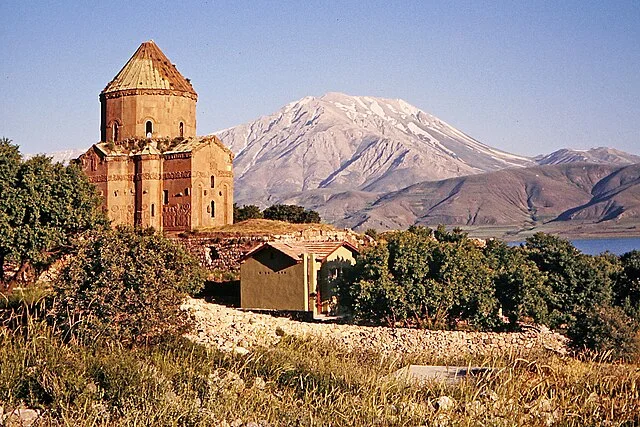Akdamar Church, also known as the Church of the Holy Cross, is located on Akdamar Island in Lake Van, eastern Turkey. It is one of the most significant examples of Armenian architecture and a key monument of medieval Christianity.
Get your dose of History via Email
Historical Background
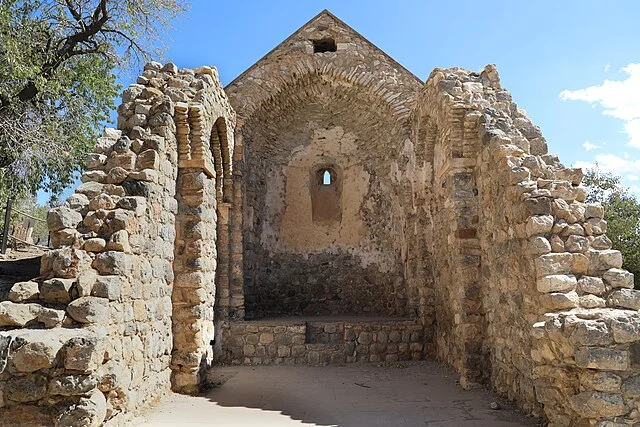
The church was constructed between 915 and 921 AD during the reign of King Gagik I of the Artsruni dynasty. The island of Akdamar, situated in Lake Van, was part of the medieval Armenian Kingdom of Vaspurakan. The church was built as part of a monastic complex dedicated to the Holy Cross.
Architecture and Design
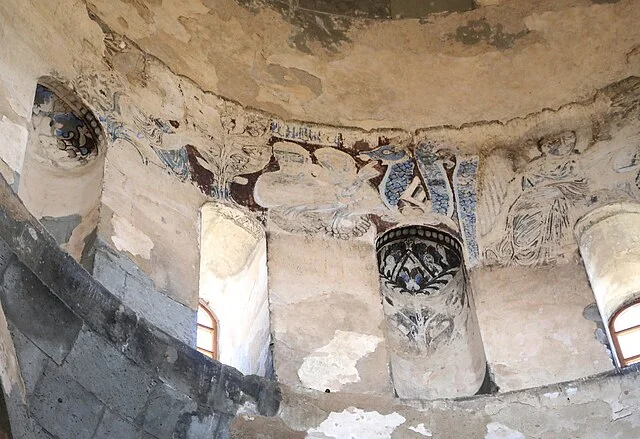
Akdamar Church is a prime example of Armenian ecclesiastical architecture. It features a central domed structure, with a rectangular layout and a single nave. The church’s exterior is adorned with intricate relief carvings, which are among the finest examples of Armenian medieval art.
The most notable feature of the church is its exterior decoration. The walls are covered with sculpted scenes from the Bible, including the story of Adam and Eve, Noah’s Ark, and Christ’s Passion. These reliefs are important not only for their artistic value but also for their historical and theological significance.
The church’s interior is simpler, with a small altar and a few murals. The building is constructed with local volcanic stone, giving it a distinctive reddish hue. The use of this material adds to the church’s unique visual appeal.
Importance and Preservation
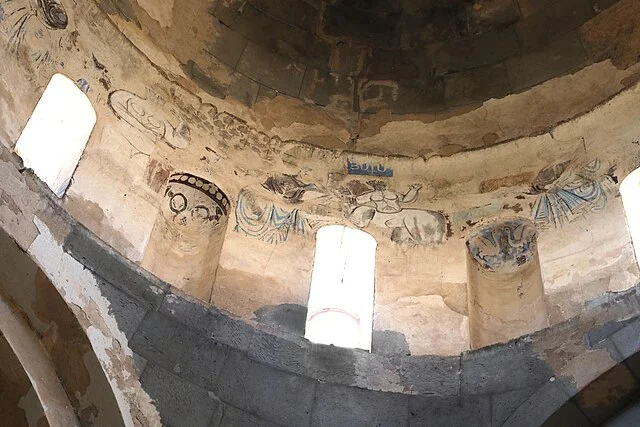
Akdamar Church holds immense historical and cultural significance. It is an important symbol of Armenia’s medieval Christian heritage and its architectural legacy. The church was active as a place of worship until the 17th century, after which it fell into disrepair.
In the 20th century, Akdamar Church became a symbol of Armenian cultural heritage in Turkey. The church was restored in the early 2000s and converted into a museum in 2007. Today, it is an important tourist attraction and a site of religious and cultural pilgrimage.
Religious Significance
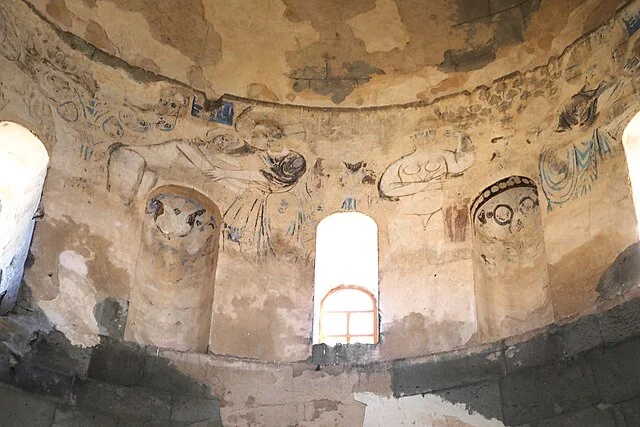
The church’s association with the Holy Cross is central to its religious significance. It was believed to house a relic of the True Cross, a piece of the cross on which Jesus Christ was crucified. The presence of this relic made Akdamar Church an important pilgrimage site during the medieval period.
Today, the church continues to be used for religious purposes. The Armenian Apostolic Church holds services there, especially during the Feast of the Holy Cross.
Conclusion
Akdamar Church is a remarkable example of Armenian medieval architecture and religious art. Its historical significance, architectural beauty, and religious importance make it a valuable cultural heritage site. Through restoration efforts, it continues to serve as a symbol of both Armenia’s Christian legacy and the rich history of the region.
Source:

